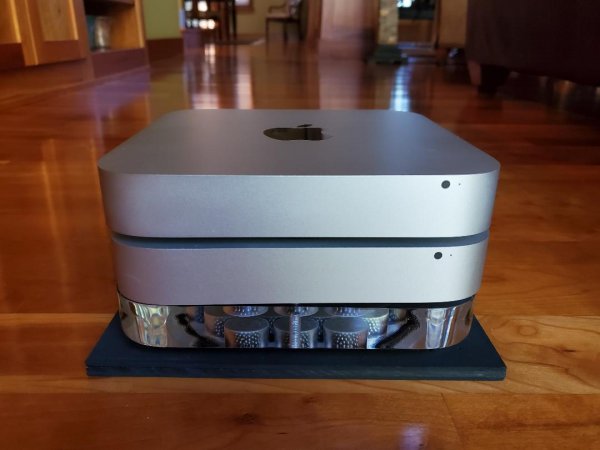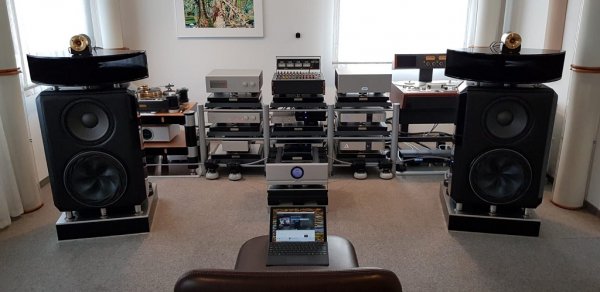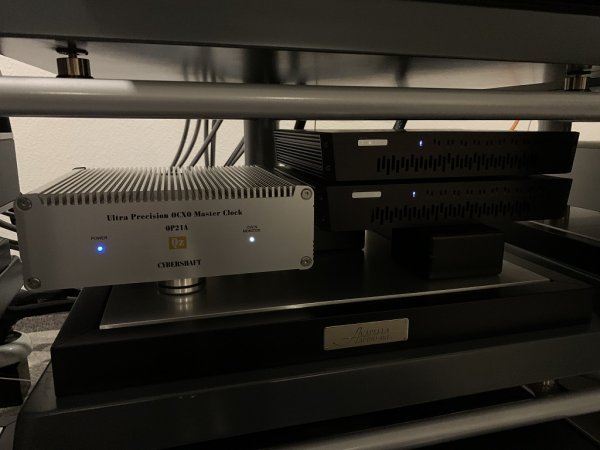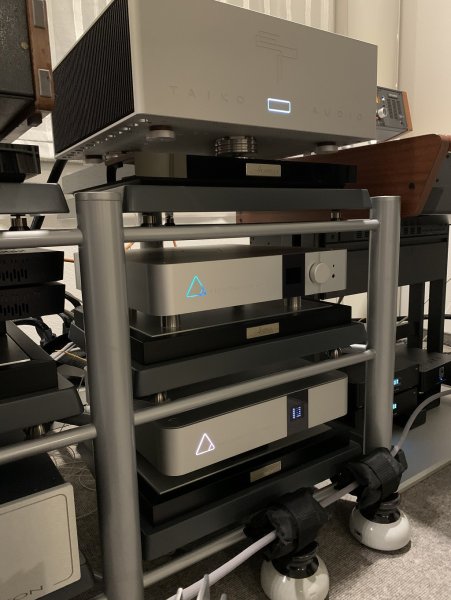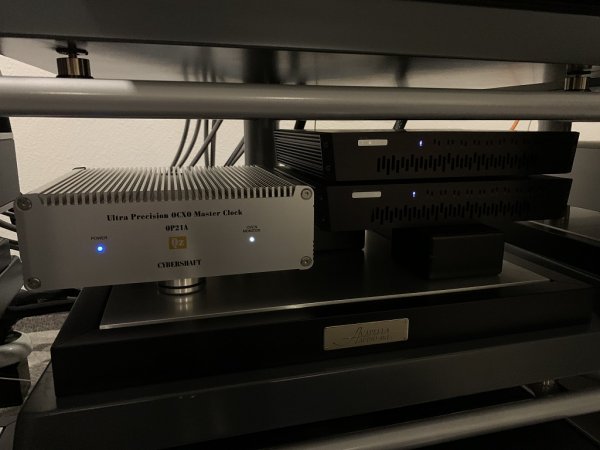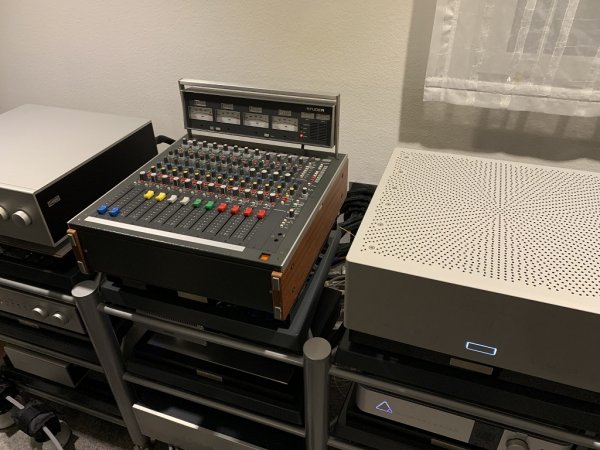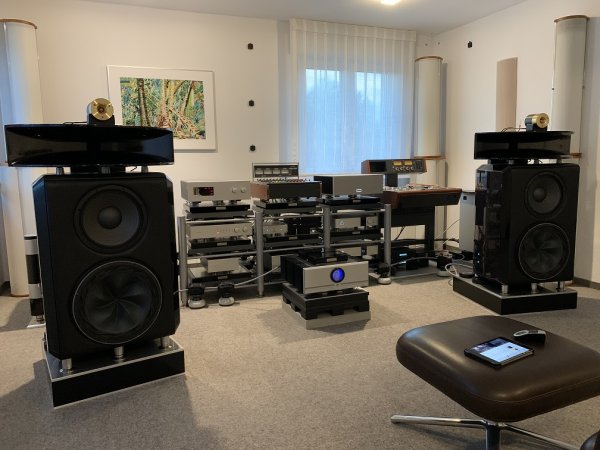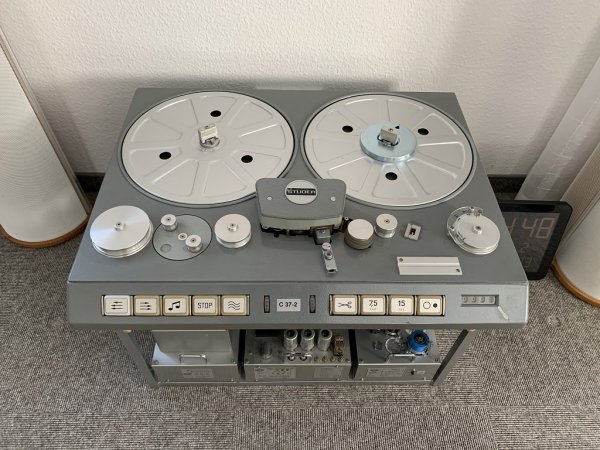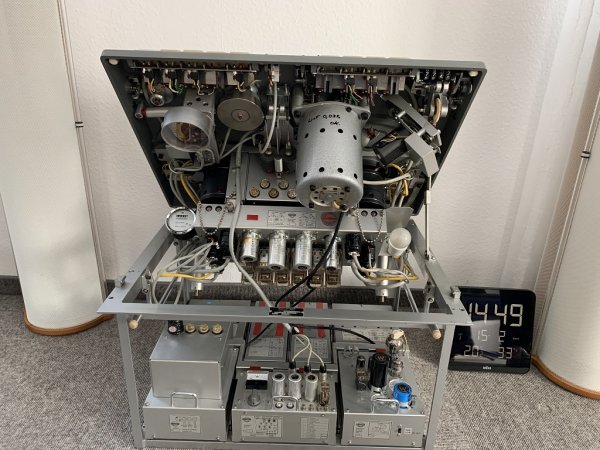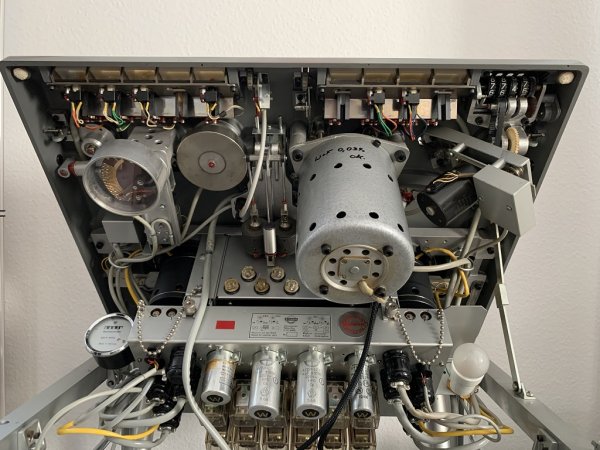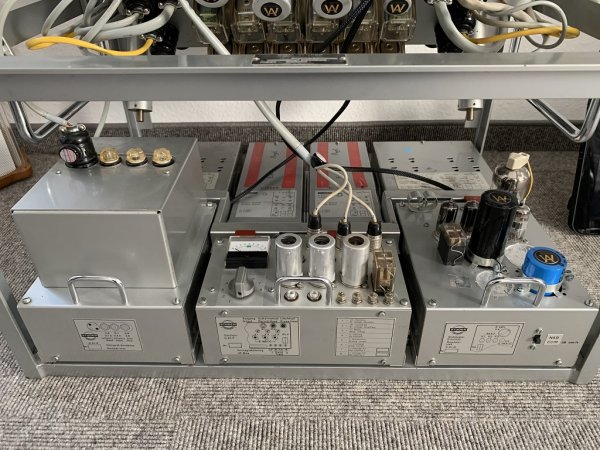SGM Extreme - 2 week experience: JCAT cards
As previously stated, one of the luxuries that the Extreme provides is that it has several free PCIe slots allowing for future expansion as necessary. This also allows for easy A/B testing.
View attachment 61675
According to Emile, slots 1, 2, 6, and 7 are tied to CPU 1 while slots 3, 4, and 5 are tied to CPU 2. In his listening tests, he found that the Optane card is best suited for slot 3 (CPU 2) from a SQ perspective and so I did not attempt to move that card. He also found that the SFP network card sounded best when tied to CPU 1. I tried moving this SFP card from slot 2 (CPU 1) to slot 4 (CPU 2) and I have to agree, when tied to CPU 1, the SFP card sounds smoother and less coarse and so credit once again to Emile for leaving no stone left unturned. When I compared network cards, I kept them tied to CPU 1. Same thing with USB cards.
As previously reported, the stock dual RJ45 Ethernet ports on the Extreme sound very good. In the absence of any comparisons, I could happily live with the SQ from these ports and so I don't blame anyone who doesn't wish to go beyond but what I will say is that the Extreme is capable of much more. With the EtherREGEN connected to the SFP network card using the inexpensive SFP transceivers versus the EtherRegen connected to either of these RJ45 Ethernet ports even with the Sablon Ethernet cable, I am finding the fiber connection to be superior and easily worth the small asking price of the ER + cheap SFP transceivers.
JCAT Net Card FEMTO
How about the JCAT Net Card Femto? The answer is more complicated. Compared against the stock Ethernet ports of the Extreme, with the JCAT card powered by an SR7, no question, the JCAT card is better and the improvement is not so subtle to my ears. It is more dynamic, more expansive sounding, and timber is smoother and richer sounding. To all that I have subjected to A/B testing, with no exceptions, everyone has preferred the presentation of the JCAT card.
With JCAT vs fiber, this is where things get tricky. The ER along with these cheap SFP transceivers feeding the SFP card is sounding very satisfying at this time. Against the JCAT card being fed by either the ER or directly by my modem/router, the SFP connection has the lower noise floor and better resolution while the JCAT card sounds airier, has more tonal body, and has the bigger sound stage, especially when fed directly by the modem/router.
With Mahler's 1st Symphony, with the JCAT card, I am really liking Thierry Fischer's DXD version:
View attachment 61680
This is a modern recording that I just love. It is clean, dynamic, and with a very accurate sense of scale and was originally recorded using a DXD recorder and so this DXD file is essentially an unprocessed version of the master. These types of recordings, imo, represent the future.
With fiber, I am preferring Bruno Walter's version more:
View attachment 61677
Ignore the smaller size of the above thumbnail photo as that has no relevance. Bruno is the naturally more expressive conductor but casting that aside for the moment, the Bruno Walter version (1961) is a tape transfer to DXD by HDTT that has a very dense tonal quality to it that sounds a touch slow and strident on the JCAT card but nicely adds body to the fiber card. All things considered, this presentation on the fiber card is "to die for." You could see where this leads. Certain recordings may sound better one way versus the other and so there is no clear winner here.
Adding to the complexity, because I have no idea how things will sound with the SOtM sNH-10G, M12 Gold, or S100, all of this will all have to be assessed again at a later time.
JCAT USB Card FEMTO
The stock USB port on the Extreme is probably the best sounding stock USB port I have heard. According to Emile, this port is based off of the ASM3142 chipset that he really likes. In any of my previous builds, especially my last build utilizing a certain ASUS mini-ITX board, the stock USB ports sounded atrocious making something like the JCAT USB card a necessity. With the Extreme, I could once again see why no one would care to try and improve upon this. Here, the JCAT USB card provides an alternative voicing that may not be to everyone's taste but it is to mine. The stock USB port on the Extreme sounds more incisive where the JCAT card sounds fuller and is harmonically richer. The LPS-1.2 does a better job powering this card than the JCAT NET Card FEMTO and the standard SR4 by Paul Hynes is a step better but it is with a DR SR7 rail where the benefits of the JCAT USB card are most fully realized.
USB cables
I'll cut to the chase here. Not surprisingly, USB cables make a big difference. Having been part of many USB cable shootouts, I found the Intona Ultimate USB cable to be the highest resolution cable I had yet heard with no apparent harshness. Some found this cable to sound a touch sterile or mechanical but not me. I really like this cable.
Due to
@spiritofmusic's prodding, I reached out to Mark at Sablon and asked to demo his new USB cable and I was quite surprised to find that his new cable somehow matched the resolution of the Intona Ultimate (not a small feat) while providing texture and air that the Intona lacked (although I hadn't realized it was lacking until I heard the Sablon). At a fraction of the price of the Intona Ultimate, this new Sablon is a NO BRAINER.
More to follow...



